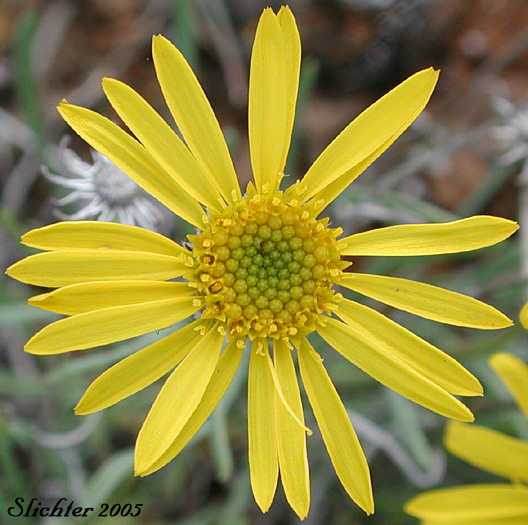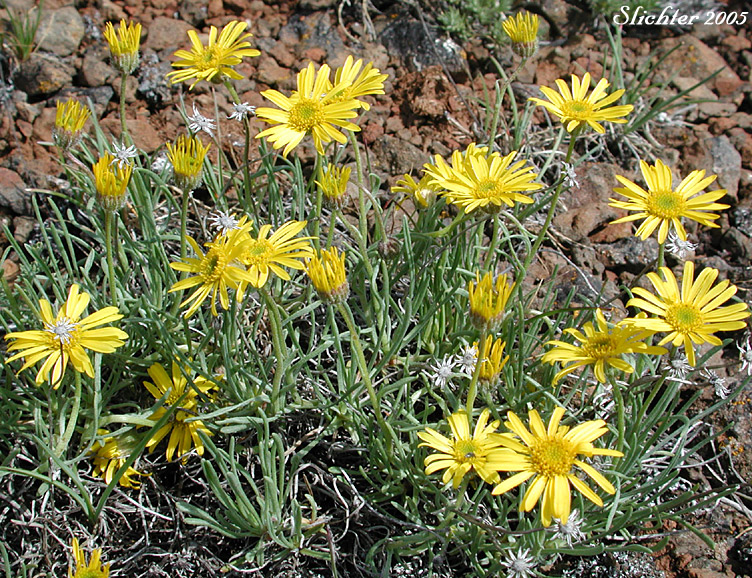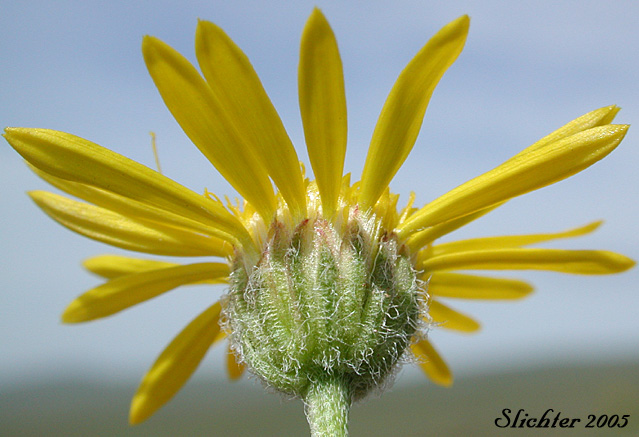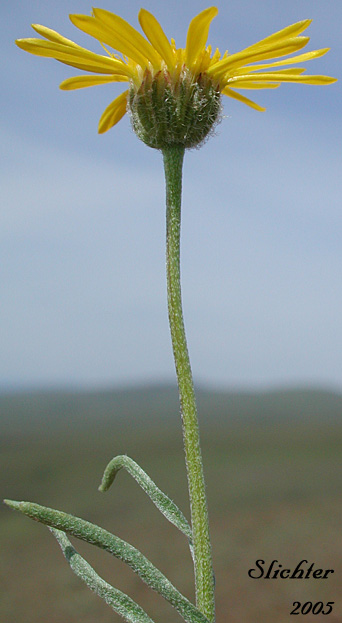 The photo at right shows a close-up of bothe the spreading
ray flowers and central cluster of disk flowers within the flower head of
yellow desert daisy.
The photo at right shows a close-up of bothe the spreading
ray flowers and central cluster of disk flowers within the flower head of
yellow desert daisy.Yellow desert daisy is a cushion plant with many linear leaves and short upright flowering stems from 5-20 cm high. The herbage consists of fine gray hairs which are all straight and lie in the same direction appressed to the stem. The leaves are al linear in shape with entire margins, ranging from 1.5-9 cm long and 0.5-3 mm wide. The leaves are either entirely basal or occasionally mostly basal with a few stem leaves.
Each stem has a single quarter-sized flower with yellow disk and yellow rays. The 15-45 ray flowers measure from 4- 11 mm long while the central disk ranges from 8-13 mm wide. The disc flowers measure from 3.5- 5.3 mm long. The leaves and stems are finely gray-haired. The involucre is 4-7 mm high with fine, straight and flattened hairs or occasionally finely glandular.
Yellow desert daisy flowers from May to June.
Yellow Desert Daisy may be found in dry, rocky soil, often with sagebrush, from the lowlands to 2500 meters in the foothills and lower mountains.
Yellow Desert Daisy is found mostly east of the Cascades and Sierra Nevada, from southern British Columbia to Yosemite National Park, east to western Wyoming and Montana.
This is a beautiful species which looks very pleasing in a winter-protected (at least west of the Cascades) rock garden. Be sure to give it room to grow, as other larger, more aggressive species may out compete it when planted near by.
The photo above shows a close-up of the underside of the flower head of yellow desert daisy. Note the numerous spreading hairs on the involucral bracts.
With yellow desert daisy, the involucral bracts may be covered with spreading hairs, but the stems are covered with grayish, appressed hairs. Note also the one to several strap-like stem leaves.


